Heath or Mire? Bog or Swamp? Using Vegetation classifications with AFC
,
Last weekend I was lucky enough to join the Assynt Field Club (AFC) on their Training course on NVC Heaths and Mires identification, the funding of which was awarded in CALL’s Community Grant Scheme this year. It allowed AFC to bring in experts in the field Alison and Ben Averis to teach a training course to learn how to classify our heaths and bogs in order to look at how best to manage them or to evaluate their condition.
NVC stands for National Vegetation Classification, developed in the 1980’s, and is the standard way to class vegetation types in Britain. It breaks down into many vegetation types, this course looking at heaths and mires only. There are 38 mire communities and 22 heath communities to decide on from the species of vegetation found in an area and their dominance.
On day 1 we spent our time near Glencanisp Lodge, walking up the hill behind the walker’s carpark. Looking at the flora, lichens and liverworts we learned how to identify key species to help with classifications. This meant we could decide if it was dry heath, wet heath or bog, from this we would look at some more key species to determine its classification within one of the three main types. Example species we were looking for were Purple Moor Grass (Moilinia caerulea), Deer Grass (Trichophorum cespitosum), Cross Leaved Heath (Erica tetralix) and Bog Myrtle (Myrica gale).
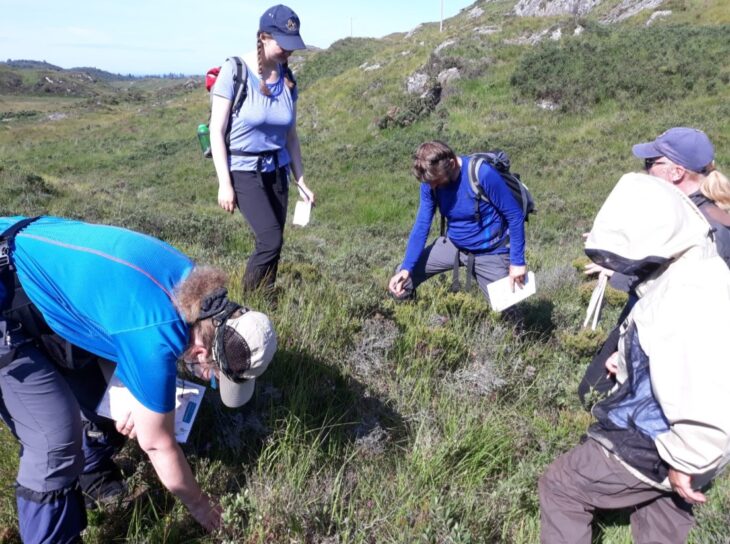
Ben advised us that most wet heath here in NW Scotland is the M15 wet heath category, this will have a dominance of Deer Grass and Cross Leaved Heath growing on moist peat and likely to be on a slope. There is then a further 4 sub communities within M15 (a to d) depending on the other species found. In the Highlands this is a widespread community but elsewhere in the UK it is sparse, therefore it is protected through UK and European designations of a UK BAP Priority Habitat and an Annex I habitat under the Habitats Directive.
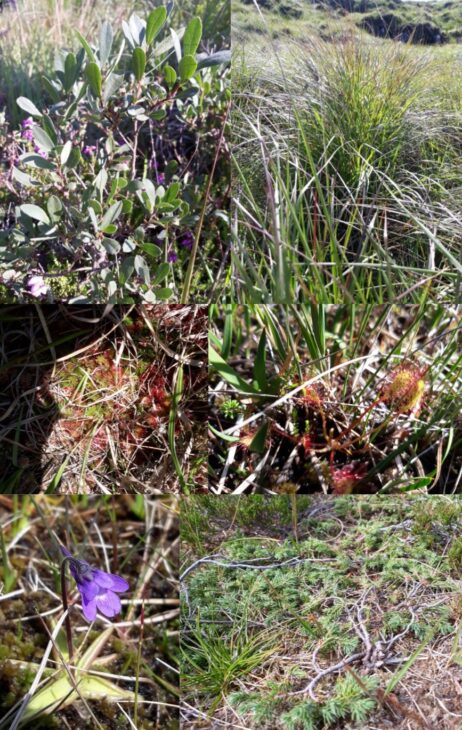
Other mire vegetation types found at Glencanisp were M17 (Deer grass and Hare’s Tail Cotton Grass dominant) and M19 (Ling Heather and Hare’s Tail Cotton Grass dominant) along with their subcommunities. It was clear to us earl on in the day that just because a species is listed as growing in that category, this didn’t mean it had to be there. Its about the combination of what is there and what is absent.
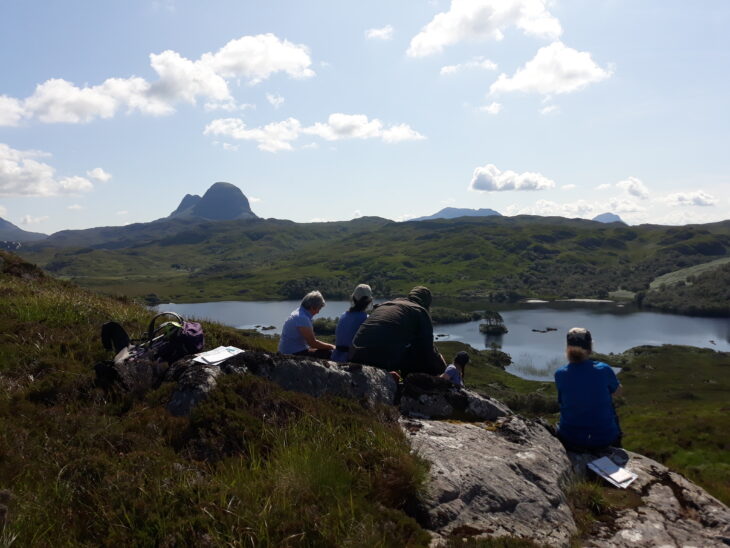
After Lunch we moved further up the hill to look at some dry heaths with H15 (Ling Heather and Dwarf Juniper dominant, although no Dwarf Juniper found) and H21 (Ling Heather and Blueberry) the most commonly found with small patches of M10 (Dioecious Sedge and Common Butterwort dominant).
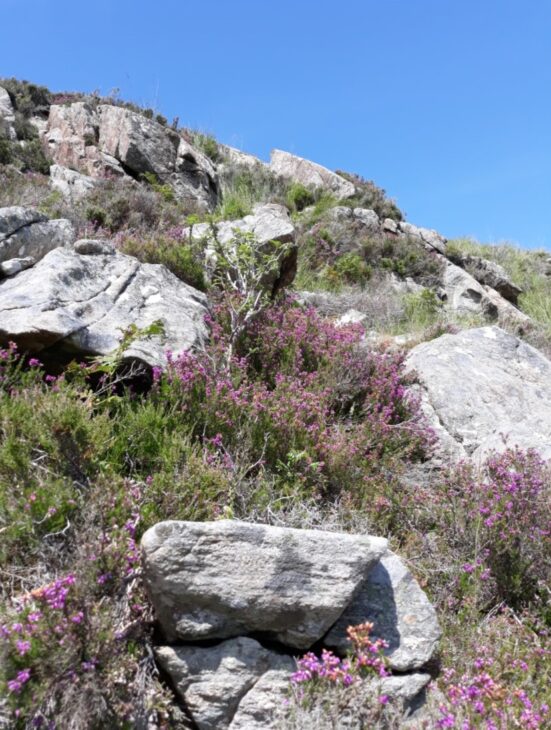
Day 2 we spent based at Quinag, in the morning climbing up the ridge to look at montane heath and then spent the afternoon on the lower slopes by Loch Assynt.
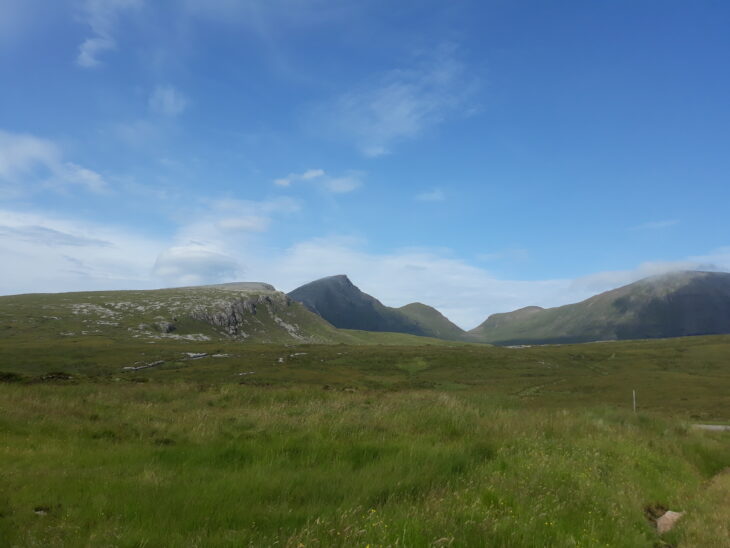
We pushed on up the slope on the west side of Quinag, looking for the dry heath that we were missing from yesterdays outing. The lower slopes were covered in species such as Bell Heather, Racamitrium Moss and Deer Grass leading us to classify it as a M15c. Just as we turned off the main path we had a little look at this little loch, dominated by Pondweed and Bogbean. Here we needed a little guidance as this would technically not be classed under heath or mire. S9 was suggested making it actually a swamp.
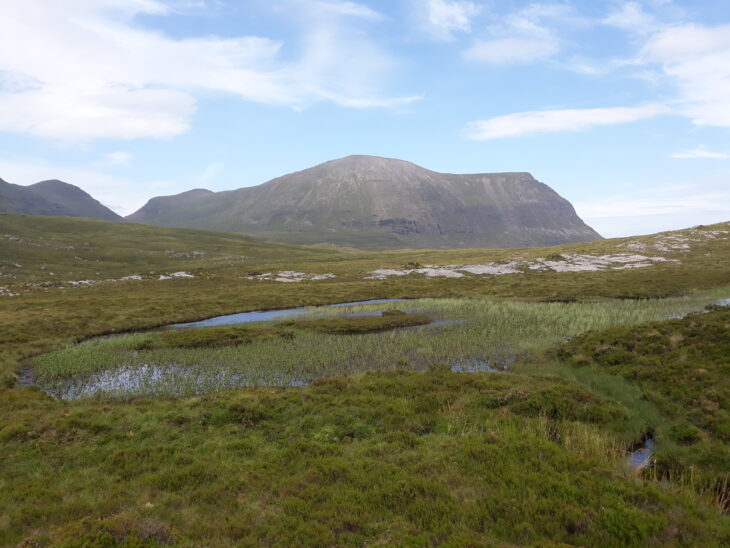
The further up we went the less vegetation there was. We were losing the tall Hare’s Tail Cotton grass, Deer grass and most of the heather species as the peat gradually got thinner and thinner on top of the rocks. This change in the dominant species meant that Cladonia lichens were becoming more abundant and there was much more exposed rock. We started to see Dwarf Juniper, which we could not find yesterday at Glencanisp having declined over Scotland due to burning practices in the past. It may be difficult to judge from these pictures, but the vegetation up here is very stunted, being only a couple of centimetres high due to the wind and exposure at this height.
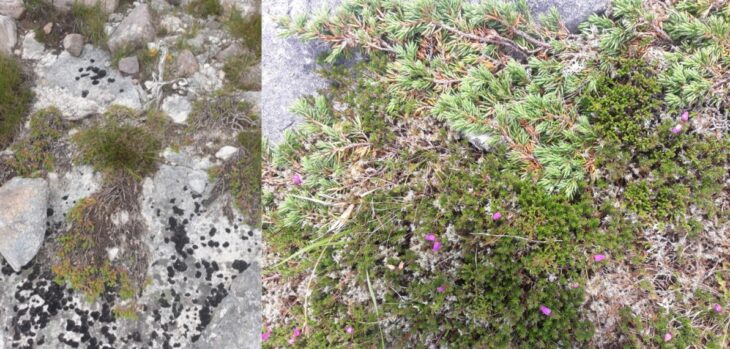
In the afternoon we headed around the corner to park at Loch Assynt and walk up to the steep West face of Quinag. Here there are surveys being carried out already to monitor progress of seedling regeneration, classifying and knowing more about the components of habitat that make up this area could be important for making management decisions in the future.
Here we returned to wetter, peatier soils and headed towards an area covered in Phragmites. Alongside the tall reeds grew Black Bog Rush, Carnation Sedge and Heath Rush. Here was a slightly flush vein from an underwater spring leading this little patch of Phragmites, and we classed it as M15a alongside M19 and M15c.
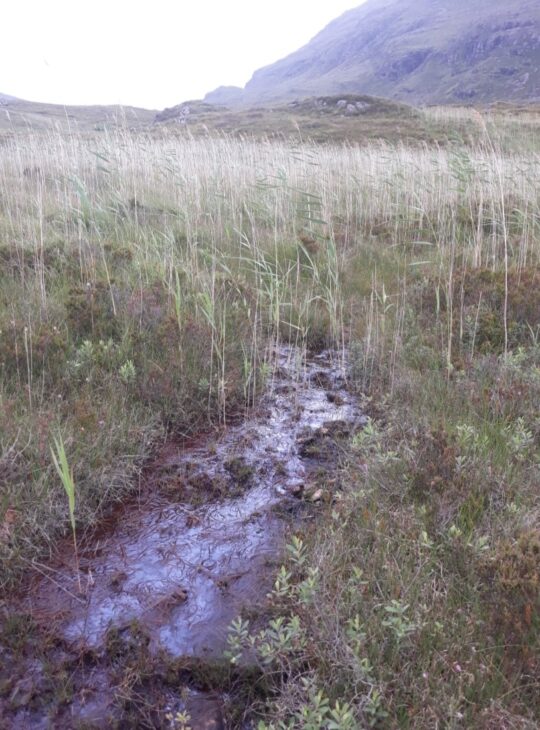
We then investigated the bog communities as this ground was a lot wetter. The area shown in the photo below was my personal favourite site. Slightly odd looking, with widespread wet areas and islands of dryer moss communities. On closer inspection we classified it as M1 with islands of M15c. Not far from this we also found White Beaked-Sedge (Rhynchospora alba), rare to see.
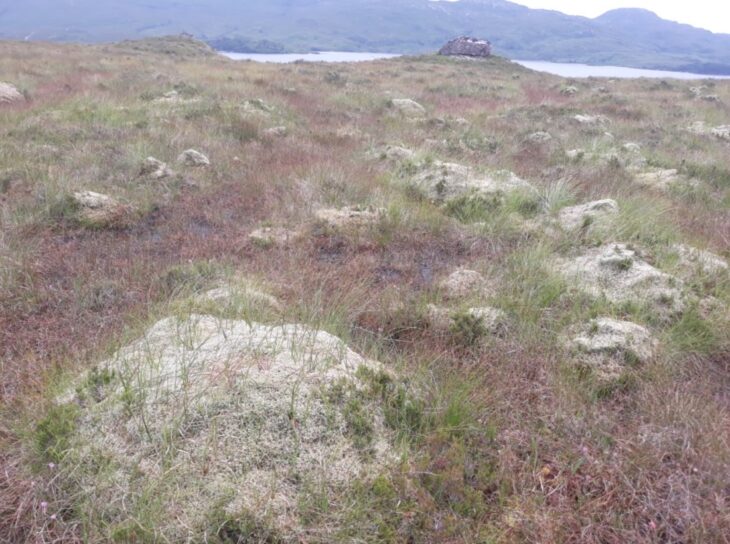
Below was the view on the way back to the cars. You can see the different patches by the subtle changes in the shade of green. A lot easier to see the patches from slight elevation than when you are in them!
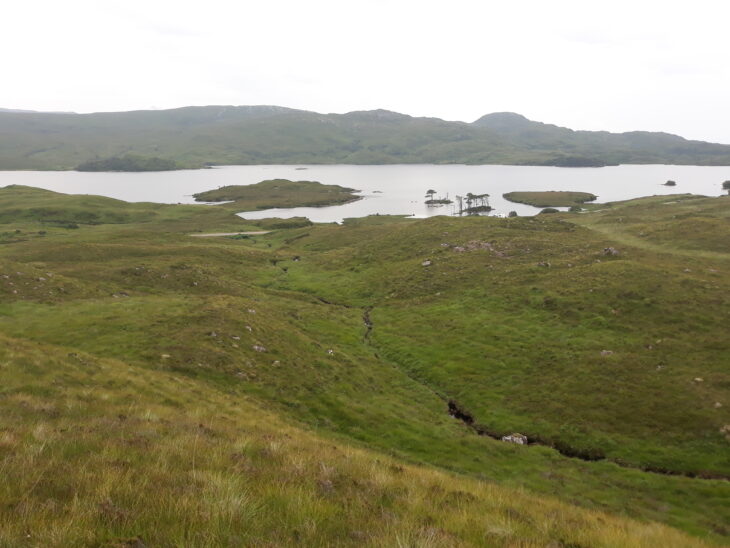
Thank you to Assynt Field Club and Ben and Alison Averis for such a wonderful weekend.
